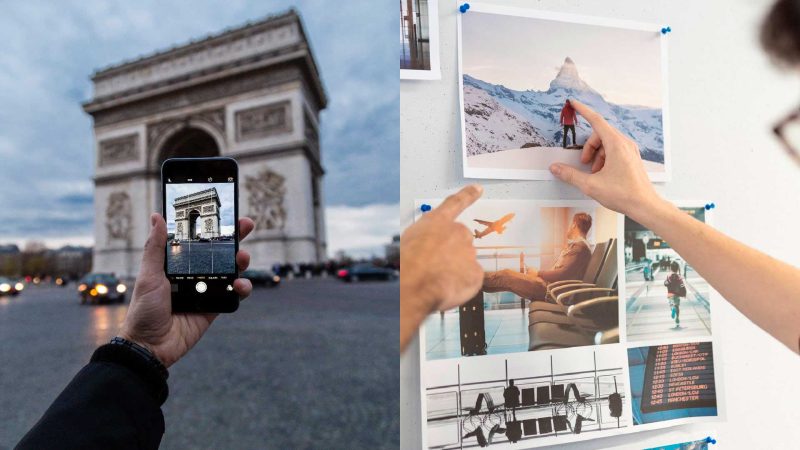Tourism has always been one of the most influential economic and cultural forces worldwide. Today, with growing competition among destinations and the power of social media, tourist destinations must go beyond traditional postcards. This is where tourism branding comes in—a powerful tool that allows for creating a strong brand identity, attracting visitors who seek unique and memorable experiences. In this article, we will explore how tourism branding is revolutionizing destination perception, offering a crucial competitive advantage in the global market.

The Essence of Tourism Branding
Tourism branding is not limited to designing a logo or choosing a catchy slogan. It is a comprehensive tourism communication strategy aimed at capturing and conveying a destination’s unique identity, emotionally connecting with travelers. The goal is to turn a destination into an attractive and relevant brand that stands out in the minds of potential visitors. By creating an emotional bond with travelers, tourism branding helps foster loyalty, encouraging tourists to return and recommend the destination.
Moreover, tourism branding involves several strategic elements, from storytelling to managing online reputation. A successful branding approach must be supported by well-designed communication solutions tailored to each destination’s characteristics.
Tourism Communication Strategies: Beyond Slogans
To implement effective tourism branding, it is essential to develop communication strategies adapted to the interests and expectations of the target audience. A catchy slogan is not enough; tactics that authentically connect with tourists and highlight what makes the destination special are needed. Tourism communication strategies include:
-
Use of Social Media: Platforms like Instagram and Facebook allow destinations to showcase the authentic and visual side of a place. Through images, videos, and user-generated content, a personal connection is created with potential visitors.
-
Experiential Marketing Campaigns: Experiential marketing is key to creating a lasting emotional and visual impact on visitors. By offering immersive experiences, tourists can feel and live the destination even before arriving.
-
Digital Tourism Promotion: Promotion through digital media enables a destination to reach a global audience, showcasing its appeal and diversity in different languages and cultures. Tourism advertising campaigns focus on highlighting unique experiences found only in that specific place.
These tactics not only promote the destination but also foster a sense of belonging and a desire to explore the authenticity of the location.
The Impact of Tourism Branding on Destination Promotion and Management
One of the greatest benefits of tourism branding is its ability to transform destination management. By applying a clear and cohesive brand identity, destinations can attract a specific visitor profile, allowing managers to tailor their offerings and improve the overall experience. This type of strategic management enables sustainable tourism growth, minimizing environmental and social impact by encouraging sustainable tourism practices.
Effective tourism promotion helps balance visitor flow, distributing them across different seasons and areas within the destination. This not only improves the quality of life for local residents but also ensures a more enriching experience for tourists, who can explore the destination without the limitations of overcrowding.
Tourism Experiences: The Heart of Tourism Branding
Nowadays, tourists seek not only attractive destinations but unique tourism experiences that allow them to connect with local culture and traditions. Tourism branding should focus on these aspects and promote activities that enable visitors to live authentic experiences. From tasting local cuisine to participating in cultural events, personalized tourism experiences create lasting memories.
Experience-centered tourism promotion also drives sustainable tourism by encouraging visitors to discover other corners of the destination, distributing impact and generating income in different areas.
Tourism Content: The Art of Storytelling
For tourism branding to be effective, a strong focus on tourism content is crucial. Through stories, images, and videos, destinations can capture the essence of their attractions and convey their authenticity. Tourism content also plays a vital role in a destination’s online reputation, as opinions and experiences shared by other travelers greatly influence future tourists’ decisions.
Furthermore, tourism content allows for targeted campaigns segmented by the interests of each type of traveler. For example, some destinations may promote themselves as ideal for adventure tourism, while others focus on wellness or culture.

Conclusion: The New Era of Tourism Branding
In the digital era, tourism branding is much more than a slogan; it is a strategic communication tool that defines how a destination is perceived and how it emotionally connects with visitors. By creating branding that reflects a destination’s authentic experiences and values, destinations can attract tourists seeking something deeper than a simple postcard.
Successful tourism branding revolutionizes how destinations are perceived, transforming tourism promotion and enabling more sustainable management. In a world where tourists increasingly seek authenticity, tourism branding becomes a competitive advantage, ensuring the destination stands out and remains in travelers’ minds as a unique place to explore and remember.

